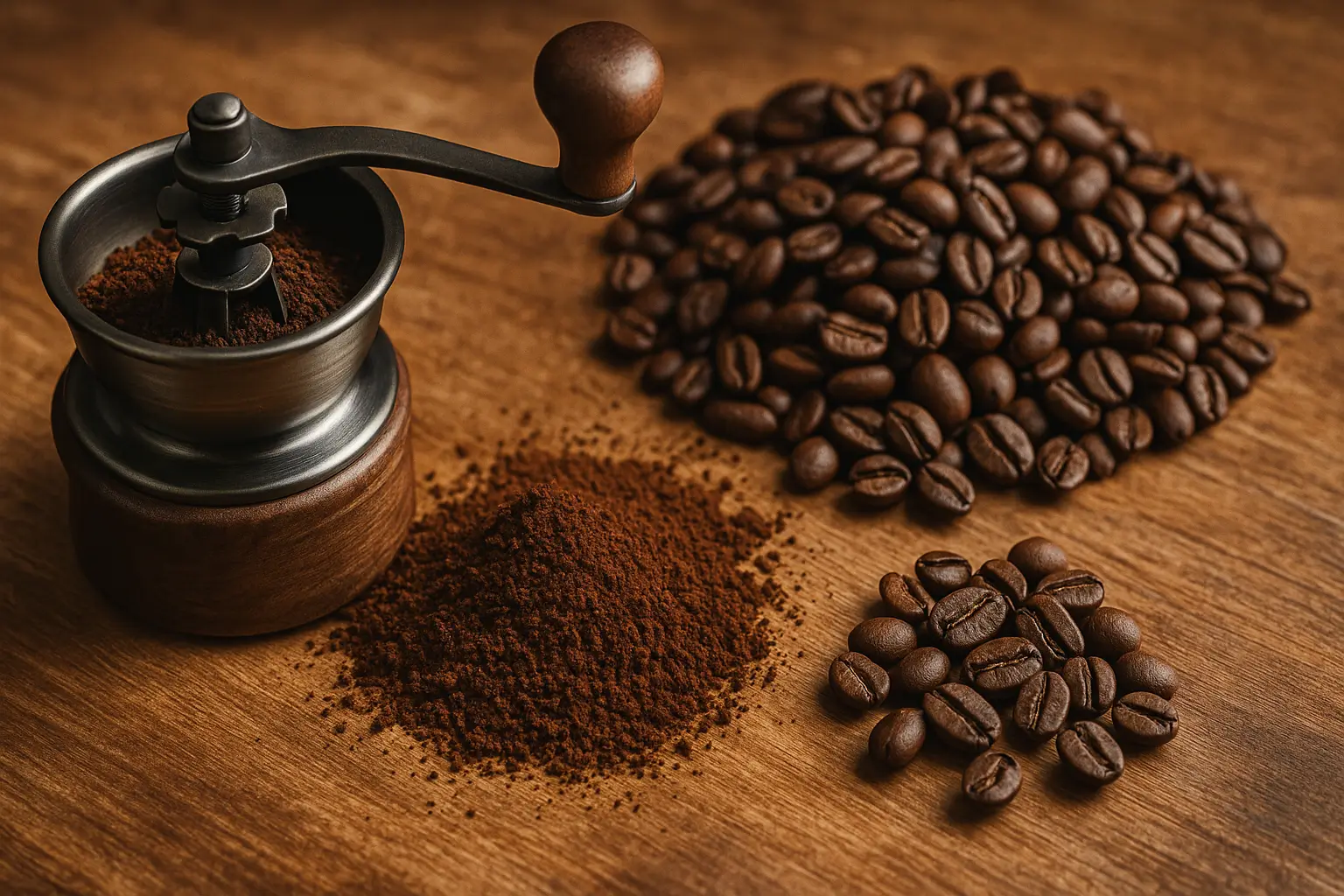Grinding coffee is more than just a step in your morning routine—it’s a critical moment that determines the flavor, aroma, and overall quality of your brew. Whether you’re using a French press, espresso machine, or pour-over, the timing and technique of grinding can make or break the final result. In this article, we’ll explore why grinding at the right moment matters, how grind size impacts taste, and tips to get the most out of your beans.
Why Fresh Grinding Is Essential
Coffee beans contain volatile aromatic compounds that begin to degrade shortly after grinding. This means the longer the ground coffee is exposed to air, the more flavor and aroma it loses.
The Science Behind It:
- Oxidation: Ground coffee has a much larger surface area than whole beans, accelerating exposure to oxygen and leading to staleness.
- Degassing: Carbon dioxide (CO₂) released after roasting helps carry aromatic oils into your cup. Grinding releases these gases quickly, so they’re best preserved in whole beans.
- Moisture absorption: Ground coffee readily absorbs moisture from the air, further degrading the taste.
That’s why the golden rule for the freshest cup is: grind just before brewing.
Optimal Timing Based on Brewing Method
The brewing method you choose also influences how and when you should grind your coffee. Let’s break down the best practices by brewing style:
1. Espresso
- Grind size: Very fine (like powdered sugar)
- Best time to grind: Immediately before pulling the shot
- Why: Espresso relies on high pressure and precise extraction, so freshness is critical. Even a few minutes of delay can noticeably affect the flavor.
2. Pour-Over (V60, Chemex)
- Grind size: Medium to medium-fine
- Best time to grind: Just before heating water
- Why: Maintaining aroma and balancing acidity is essential for clarity and complexity.
3. French Press
- Grind size: Coarse
- Best time to grind: Right before boiling water
- Why: Coarser grounds release flavors more slowly. Grinding too early may result in flat-tasting coffee.
4. Cold Brew
- Grind size: Coarse
- Best time to grind: Immediately before steeping
- Why: Cold brew takes longer to extract but still benefits from fresh grinding to avoid a dull, muddy flavor.
5. Drip Coffee Makers
- Grind size: Medium
- Best time to grind: Right before brewing cycle
- Why: Drip coffee has a longer contact time than espresso but still needs flavor integrity from fresh grounds.
Pre-Ground Coffee: Is It That Bad?
While pre-ground coffee offers convenience, it significantly reduces the freshness and complexity of your brew.
Downsides of Pre-Ground Coffee:
- Loss of aroma within minutes or hours
- Inconsistent grind size (depending on brand)
- Higher risk of moisture absorption
- Typically darker roasts to compensate for lost flavors
If you must use pre-ground coffee, try to store it in an airtight container and consume it within a week of opening.
Choosing the Right Grinder
To get the most out of your coffee beans, invest in a quality grinder. There are two main types:
1. Blade Grinders
- Inexpensive and widely available
- Uses spinning blades to chop beans
- Inconsistent grind size
- Generates heat, which may affect flavor
2. Burr Grinders (Recommended)
- Uses two revolving burrs to crush beans uniformly
- Consistent grind size
- Maintains bean integrity and avoids overheating
- Available in manual and electric versions
Burr grinders may cost more upfront, but the upgrade in cup quality is worth the investment.
How Grind Size Affects Flavor
Getting the grind size wrong can drastically change your coffee’s taste—even if you’re using great beans and fresh water.
| Grind Size | Too Fine | Too Coarse |
|---|---|---|
| Espresso | Bitter, over-extracted | Weak, under-extracted |
| Pour-Over | Slow drip, muddy taste | Sour, flat flavor |
| French Press | Sludge-like brew, hard to filter | Weak body, watery |
| Cold Brew | Bitter and gritty | Underwhelming, lacks depth |
Always dial in your grind based on taste—minor adjustments can fine-tune the balance.
Tips for Grinding Coffee Like a Pro
- Grind only what you need for each brew to reduce waste and oxidation.
- Use a scale to measure beans for precision and consistency.
- Clean your grinder regularly to avoid old oil and residue buildup.
- Adjust grind size depending on the roast and freshness of your beans.
- Store whole beans properly: airtight container, cool and dark place.
Bonus: Can You Grind the Night Before?
While it’s tempting to save time by grinding the night before, it’s not ideal. However, if you must:
- Store the grounds in an airtight, opaque container.
- Keep them in a cool, dry place.
- Avoid refrigeration, as condensation can ruin the flavor.
Remember: freshness is king. Grinding the night before is better than buying pre-ground, but not as good as fresh grinding right before brewing.
Mastering the Grind for Better Coffee
Grinding your coffee at the right moment is one of the simplest ways to dramatically improve your daily cup. It’s the difference between a flat, lifeless brew and a vibrant, aromatic experience. With a good grinder and a few tweaks to your routine, you can unlock the full potential of your beans—one cup at a time.
